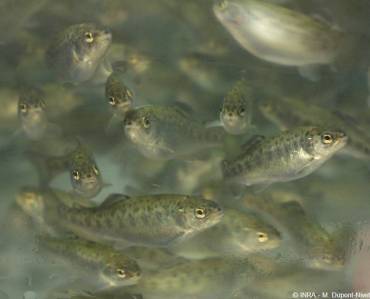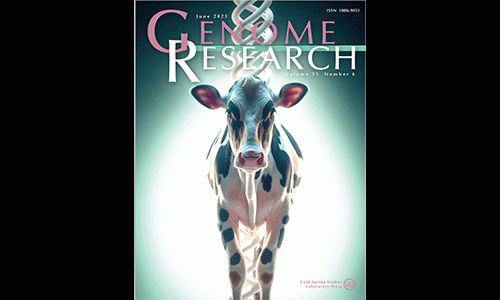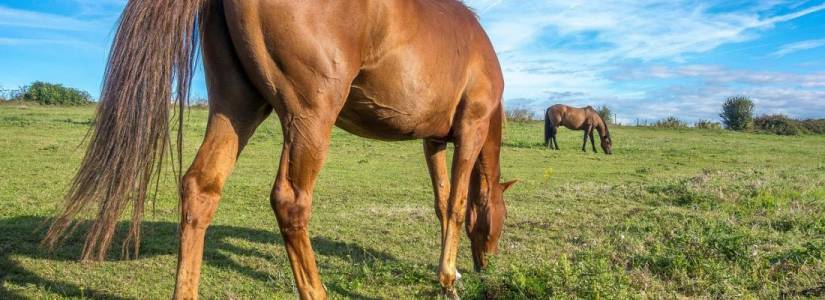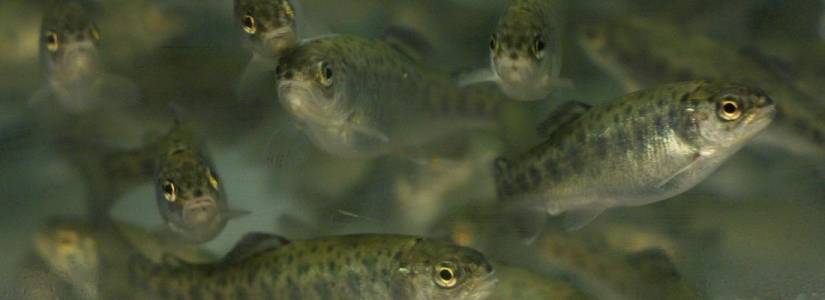Lactation is an essential process for mammals. In sheep, the R96C mutation in the SOCS2 (Suppressor Of Cytokine Signaling 2) protein is associated with higher milk production and increased susceptibility to mastitis. To understand the involvement of the R96C mutation in mammary gland development and lactation, we developed a mouse model carrying this mutation (SOCS2KI/KI).
Understanding the molecular bases controlling complex traits in livestock is essential for optimizing genetic selection methods and thus improving breeding.
Any animal or plant population, wild or domesticated, evolves through continuous and cumulative changes over time, based on various evolutionary forces, namely selection, genetic drift, mutation and migration, with relative effects that depend on population history and structure. The footprints left along the genome by these evolutionary processes may correspond to positive selection of favorable alleles, resulting in highly homozygous regions with low genetic diversity, or, on the contrary, to balancing selection phenomena enabling regions to be maintained in a heterozygous state and thus with high genetic diversity.
Climate change is already causing, and will continue to cause, more and more heat waves. These heat waves have a negative effect on water quality in aquaculture farms: higher temperatures and lower levels of available oxygen in the water. Technical solutions are available to limit these sometimes rapid and severe variations in temperature and oxygenation in trout farms, but they are often costly. Selecting animals that can withstand these heat waves is therefore a promising way of coping with the impact of climate change. Scientists at INRAE, in collaboration with SYSAAF (the French poultry and aquaculture breeders' association) and two French trout breeding companies, have studied the feasibility of breeding for resistance to hyperthermia (exposure to high temperatures) and/or hypoxia (exposure to reduced oxygen levels).
The prestigious Newcomb Cleveland 2024 prize awarded for a publication on the ancient DNA of horses bred and used by indigenous peoples of the North American plains, published in the journal Science in 2023. An interdisciplinary team of American Indian and Western scientists, coordinated by Ludovic Orlando (CNRS Toulouse) and William Timothy Treal Taylor (University of Colorado), has been selected to receive the Newcomb Cleveland 2024 Award (AAAS) for their work on the genetic origins of the first horses bred and used by the indigenous peoples of the North American plains.
This study, published in the Animal Science section of the Peer Community Journal, proposes an analytical framework and indicators for the evaluation of cryopreserved animal collections for the conservation of genetic diversity. These indicators can be calculated at regular intervals to help plan and manage these collections at national and international levels, and to help population managers exploit the resources currently available. This analytical framework has been applied to the French national cryobank.
Would you like to use your motivation and skills to answer ambitious research questions in animal genetics? Then join us!
In a study published in Genomics, scientists from the UMR Génétique Animale et Biologie Intégrative - GABI (INRAE/AgroParisTech/UPSaclay, Jouy-en-Josas) have characterized the transcriptome of 35,000 embryonic cells derived from pig embryos between 5 and 11 days after fertilization. They were able to identify new sub-populations of embryonic cells, both for the secretion of molecules required for implantation, such as those expressing interleukin 1 beta (IL1B), and a population of stem cells expressing LRP2, which will subsequently contribute to the development of the embryonic placenta.
Among the traits selected for dairy cows, functional longevity - i.e. the cumulative length of time a cow produces milk - occupies a special place: it reflects her contribution to the profitability of the herd, as well as her well-being. Of course, this is only known at the end of a cow's career. But longevity can be partially predicted from the traits that impact it, such as fertility or mammal health and morphology.
Beef currently accounts for 21% of the world's meat consumption, ranking third after poultry and pork. It therefore plays a crucial role in the global food system, with great economic and cultural importance in many countries. However, its production has a high environmental impact, mainly due to greenhouse gas emissions that contribute to climate change. To reconcile the growing demand for meat with the need to reduce its ecological footprint, it is imperative to adopt more sustainable practices.
Researchers and teacher-researchers from the GABI unit run the Master 2 Predictive and Integrative Animal Biology (PRIAM) program. Over the next few years, their ambition is to make the necessary thematic adaptations to ensure that the training offered remains as close as possible to the expectations and challenges of animal genetics research and its applications in the context of the agroecological transition of livestock farming and adaptation to climate change.
In a study published in Genetic Selection Evolution, researchers from the BIGE team (Génétique Animale et Biologie Intégrative - GABI, INRAE/AgroParisTech/UPSaclay, Jouy-en-Josas) have proposed a new model identifying the transmission of environmental effects based on the analysis of phenotypes and pedigrees.
The construction of a single reference genomic sequence for each species has made a major contribution to the analysis of the genome, its diversity and its functioning. But it gives an incomplete representation of the diversity of genomes within a species. By making it possible to produce longer sequence fragments, new sequencing technologies will enable us to go even further in our knowledge of the genomes of each species. INRAE researchers are taking part in the "Bovine Pangenome Consortium", a large-scale international collaboration whose aim is to produce a pangenome, i.e. a large set of high-quality, interconnected genomes, making it possible to describe the full genomic diversity of the species. The consortium's full objectives are described in an article published in the journal Genome Biology.
Published ahead of schedule on July 6, an article co-authored by researchers from UMR GABI, Eliance, UMR GenPhySE, Genotoul and Idele on the detection and characterization of interchromosomal rearrangements in cattle has had the honor of illustrating the cover of the issue of the scientific journal Genome Research in which it was published. The journal's editors decided to accept Jeanlin Jourdain's proposal!
On July 13, the LABEO Frank Duncombe Laboratory and INRAE in Caen signed a framework partnership agreement for research on equine genetics and health, and more generally on animal health and the environment. The Integrative Biology and Equine Genetics team (UMR GABI, INRAE Jouy) will develop its research projects within this framework, notably on equine influenza, genomic selection and "coup de sang" (myopathy) in racehorses. This collaboration will take on an international dimension from May 12 to 15, 2024, when the two laboratories will organize the 14th International Havemeyer Horse Genome Workshop, bringing together some 100 scientists at the Château de Caen.
The aim of this recently published work was to document the contribution of epigenetics to animal health and longevity.
In a study published in Genetics Selection Evolution, scientists from the UMR de Génétique Animale et Biologie Intégrative - GABI (INRAE/AgroParisTech/UPSaclay, Jouy-en-Josas) have described the genetic architecture of resistance to acute hyperthermia, i.e. the ability of fish to survive high temperatures. They have shown that 29% of performance variation in this trait is genetic in origin in a French commercial population, attesting to significant potential for genetic improvement. Genetic correlations of this trait with the main production traits - growth, % intramuscular fat and carcass yield - are close to zero. Selection for resistance to acute hyperthermia should therefore have no impact on these traits, and vice versa.
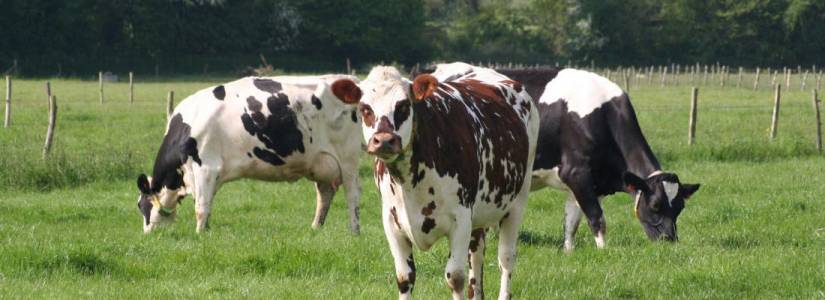
In cattle, like in all animals, genetic material is contained in pairs of chromosomes, each set of which is randomly distributed when gametes (spermatoza or ovocytes) are formed. During that process, genetic material from one chromosome sometimes gets shifted to another chromosome that is not part of the same pair, and this is known as interchromosomal rearrangement. Fertilisation with a gamete containing a one or more rearranged chromosomes will cause the embryo to have fewer or more genes than normal, which is, in most cases, fatal. For the first time, INRAE geneticists, in collaboration with colleagues from ELIANCE (French national livestock breeders federation), have conducted a population study (on 5571 insemination bulls) to quantify the frequency of such defects, their origins and the consequences they have on livestock. Their results, published in Genome Research, reveal that 1 bull in 450 may be a carrier of an interchromosomal rearrangement, whose consequences on the affected animals' health and fertility may cost the sector more than one million euros for each insemination sire that is a carrier. This study is based on the millions of genotyping data routinely generated for genomic evaluation of insemination bulls and their progeny (offspring). The approach used is the first step towards widespread screening for such chromosomal anomalies.
In cattle, as in other mammals, the genome is made up of several pairs of homologous chromosomes or autosomes (present in 29 pairs in cows) and a pair of sex chromosomes, X and Y. Females have two copies of the X chromosome, while males have one copy of each of the X and Y chromosomes. Females have 2 copies of the X chromosome, while males have one copy of each X and Y chromosome. Although it contains a large number of genes, the X chromosome is often overlooked in genomic studies, as it is present in only one copy in males. A team of INRAE and Eliance researchers from the Animal Genetics and Integrative Biology unit (GABI) has assessed the role of the X chromosome and the genes it harbors on key traits for the sustainability of cattle breeding. Their work, published in the journal BMC Genomics, reveals the importance of the X chromosome in the genetic determination of traits, and identifies the genes probably responsible for its effects.
The DGAT1 gene plays a major role in fat metabolism and triacylglyceride synthesis.
Teams from Ifremer and INRAE have just discovered two genes involved in resistance to nodavirosis, a disease that affects the brain of sea bass and causes major losses in Mediterranean fish farms. Following this discovery, published in the journal Genetics Selection Evolution, scientists and professionals from French sea bass hatcheries, which supply over 20% of the sea bass farmed in the Mediterranean (Italy, Greece, Turkey...), have launched a new project to select sea bass that are more resistant to this disease. This is a major challenge if we are to move towards more sustainable aquaculture.




